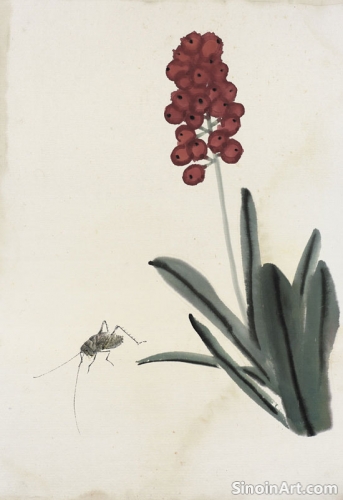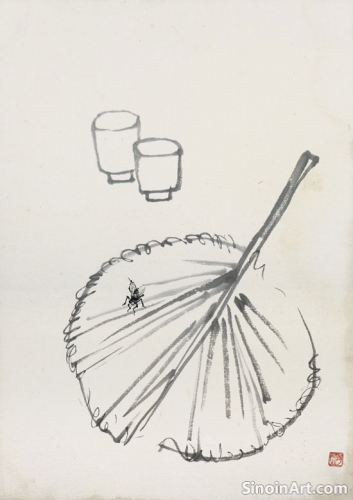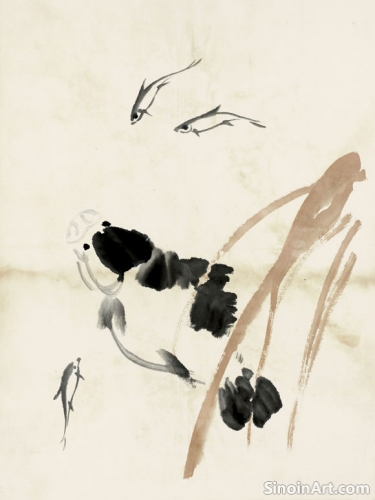The Role of the Inkstone in Xieyi
|
The inkstone, or yàn (硯), is more than just a surface for grinding ink in Xieyi painting; it's a vital part of the artist's toolkit, imbued with its own history, significance, and influence on the creative process. The inkstone is an essential part of the traditional art practice. It's more than a simple tool; it is integral to the process.  Inkstones are traditionally made from various types of stone, each with its own unique properties that affect the quality and texture of the ground ink. The type of stone, its density, and its smoothness all influence how the ink is prepared. The artist must learn how to use the stone to the best advantage.  The process of grinding ink on the inkstone is an important ritual for the Xieyi artist, a moment of quiet contemplation and preparation before the act of painting. The process of grinding ink connects the artist to the tradition, as well as to their own inner state. It is a deliberate act of focused intent.  The way the artist grinds the ink, controlling the amount of water, pressure, and time, affects the texture and intensity of the ink. Different tones of black and gray, from deep and rich to delicate and subtle, can be created with careful grinding. This careful preparation ensures the artist has total control over the ink. The inkstone is not only a functional object, but often a work of art in itself, beautifully crafted with intricate carvings and polished surfaces. It's an object of beauty and it holds historical and cultural value as well. It is a tangible connection to tradition and serves as a source of inspiration. |
Tag : Inkstone, Chinese art supplies, ink grinding, art tool
Related information
- The Essence of Expression: An Introduction to Xieyi Painting
- Xieyi Painting and the Concept of "Tian Qu"
- The "Three Perfections" in Xieyi
- The Influence of the Seal Script on Xieyi
- The Use of "Multiple Brushstrokes" in Xieyi
This article introduces Xieyi painting, a freehand and expressive style of Chinese painting, emphasizing its focus on capturing the essence of a subject through bold brushwork and simplified forms.
"Tian Qu" (natural charm) is a key aesthetic ideal in Xieyi painting, emphasizing a sense of effortless freedom, spontaneity, and a deep connection to nature, requiring artists to let their intuition guide the creative process, resulting in works that feel both deeply moving and authentically beautiful.
The "Three Perfections" (sānjué) – poetry, calligraphy, and painting – represent the holistic literati ideal, emphasizing the integration of these three art forms as a complete expression of the artist's personal feeling, thought, and their connection to tradition, with calligraphy’s influence often seen in Xieyi’s brushwork.
The Seal Script (zhuànshū) influences Xieyi painting through its emphasis on balance, flowing lines, symmetry, organic forms, and its use in artist's seals, inspiring the composition, line quality, and overall design, while also deepening the understanding of brush control, and ink application within the Xieyi tradition.
"Multiple Brushstrokes" (cūn fǎ) are essential in Xieyi landscape painting, offering a variety of textured strokes that create a sense of depth, form, and visual complexity, requiring skill and strategic layering to depict mountains, rocks, and trees, adding dynamism and guiding the viewer’s eye through the composition.